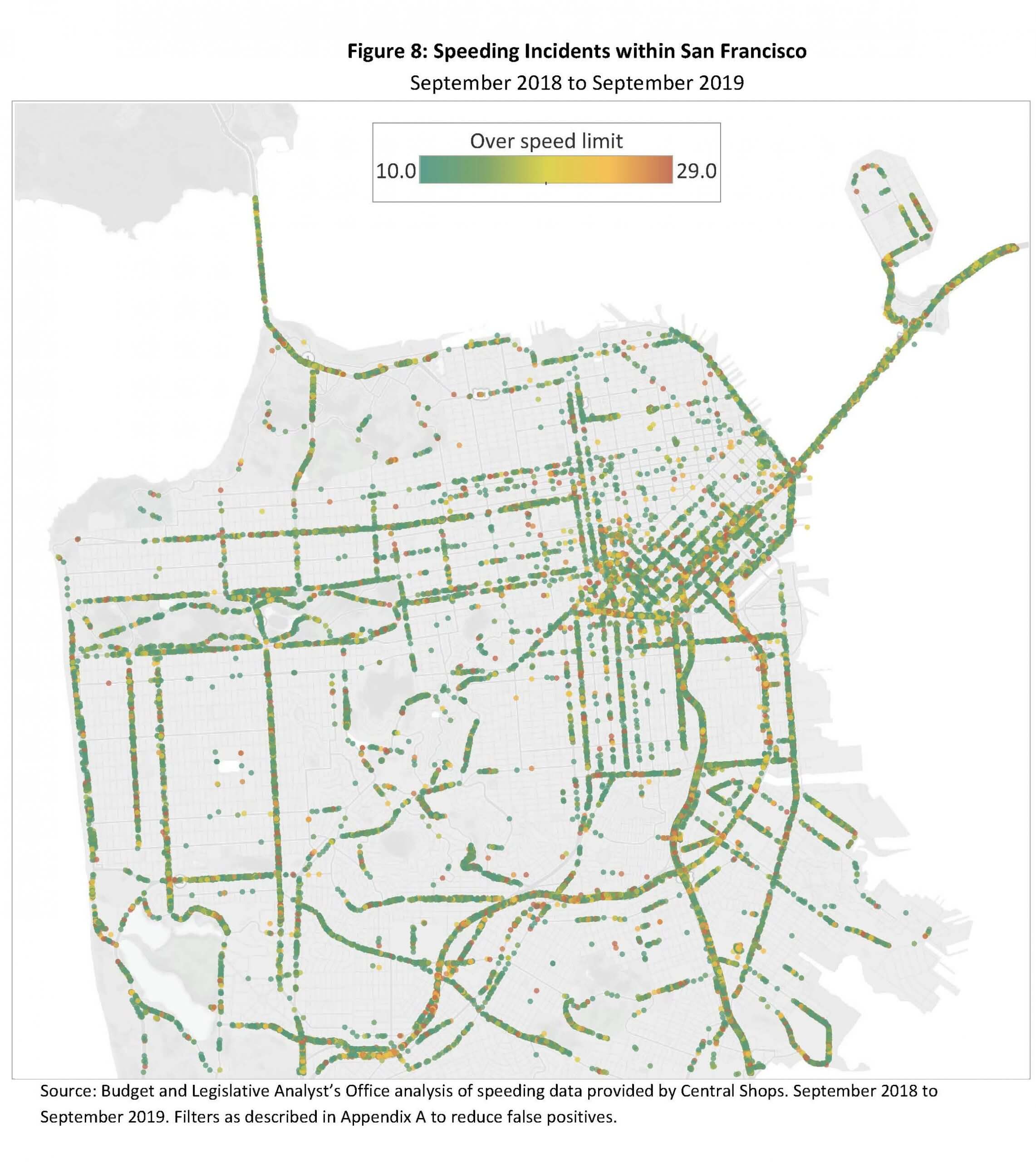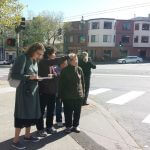New report shows dangerous speeding by City employees, but no accountability
In 2016, we lost 14 pedestrians on our streets. One of them was 38-year-old Thu Phan. She was hit and killed crossing Market Street in her wheelchair; the driver was a city employee on city business. Another of the lives lost was 86-year-old Lurilla Harris; Lurilla was hit and killed by the driver of the city-contracted paratransit vehicle that she had just gotten off of.
These crashes, like all fatal traffic crashes, wrought devastation on families and entire communities. These losses continue to be incredibly painful because they never should have happened.
In 2016, together with Senior & Disability Action, Walk SF demanded that the City take responsibility for how its employees and contractors drive.
Safety on our streets should start first and foremost with City employees. A powerful tool to support this is telematics. Telematics, also called ‘black boxes’, track a wide range of data from a vehicle: everything from time spent idling to mechanical diagnostics, as well as dangerous behaviors like speeding and aggressive driving. Cities including New York City have harnessed telematics to notably reduce crashes involving city employees and vehicles.
Board of Supervisors President Norman Yee, an incredible champion for pedestrians, successfully passed legislation in June 2016 requiring the installation and use of telematics in all motor vehicles owned or leased by the City of San Francisco with the exception of law enforcement vehicles. This was a crucial step in support of Vision Zero: the City’s commitment to end all severe and fatal traffic crashes by 2024.
Fast-forward four years. Board President Yee requested the Budget and Legislative Analyst provide a status report on telematics installed in city vehicles. Their report was released last month. The report’s findings present a maddening combination: rampant speeding and no accountability.
Excessive, recurring, and dangerous rates of speeding are happening in City vehicles driven by City employees. During the 13 months of data analyzed, 18.4% of vehicles with telematics installed reported 50 or more incidents each of speeding (defined as 10+ miles over the speed limit). If you look at all speeding incidents in vehicles with telematics from the 13-month period, drivers went between 20 to 28.9 miles over the speed limit in 16.3% of incidents. Yes, you read that correctly. 20 to 28.9 miles over the speed limit.

“Unfortunately, simply having vehicle telematic technology installed does not mean the City is benefitting from it,” states the report. Nothing is being done with the data on excessive speeding to curb this behavior. Departments and agencies are minimally using telematics. The only traffic safety metric that is consistently reported on and shared with all departments is “number of speeding incidents >80MPH” each month for that department. The report also notes that the City is not yet looking for systematic patterns when it comes to aggressive driving, even though that data exists.
Board President Yee shares these feelings, and has introduced legislation requiring departments to send data to the City Administrator’s office monthly on speeding and collisions. And in May each year, the City Administrator will report to the Board of Supervisors this data. The legislation will also require departments to develop correction plans to reduce speeding and collisions.
This additional analysis and reporting is a start in greater accountability for dangerous driving by City employees. But it will be up to Walk SF and people like you to continue to demand better from City employees. There’s simply no time to waste in harnessing every solution possible to prevent severe and fatal crashes.
Stand for safe streets and support this work. Become a member now.
Banner image: Bryan Goebel (KQED)




